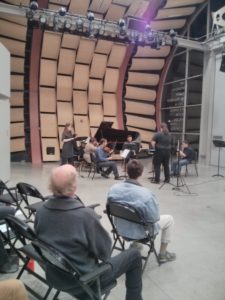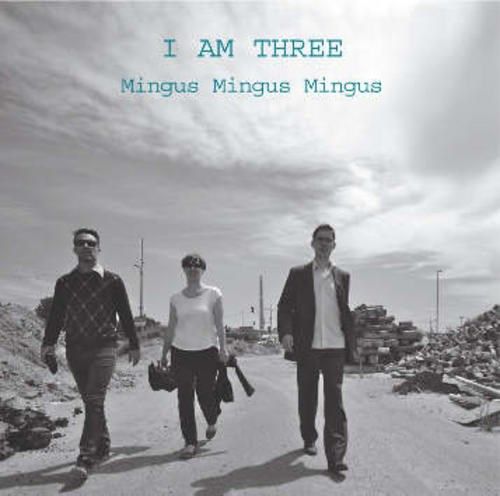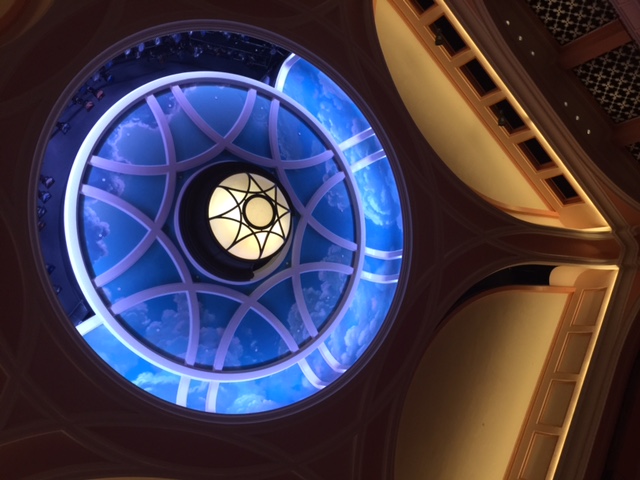 On January 13, 2017, Cal Arts presented The Path and the Expanse, a concert of music by Jürg Frey, a member of the Wandelweiser collective. A modest crowd braved Friday the 13th traffic to gather at The Wild Beast for an evening of intense concentration and state of the art experimental music. Five different pieces by Jürg Frey were performed by 15 alert musicians, including a world premiere.
On January 13, 2017, Cal Arts presented The Path and the Expanse, a concert of music by Jürg Frey, a member of the Wandelweiser collective. A modest crowd braved Friday the 13th traffic to gather at The Wild Beast for an evening of intense concentration and state of the art experimental music. Five different pieces by Jürg Frey were performed by 15 alert musicians, including a world premiere.
Circular Music No. 7 (2015/16) was first and this began with soft, sustained chords in the violin and bowed vibraphone that produced a distant, solemn feeling. A series of hushed beats from the bass drum added to the mystical atmosphere. The violin of Erik Carlson carried the piece forward, accompanied by a bassoon and extensive percussion section that contributed a variety of subdued sounds. The occasional tutti passage raised the volume slightly, and added some nice coloring while a bowed cymbal and a light xylophone passage completed the pattern. A high, thin pitch from the violin marked of each set of phrases as the piece tiptoed forward to a quiet finish. Circular Music No. 7 is both peaceful and reserved, like the dawn of a foggy morning.
The second work, WEN 58 (2007), was a solo trumpet piece played by Ethan Marks. This opened with a long silence followed by two short, muted notes – and then more silence. Longer tones followed, quietly subdued, ending with a questioning feel. This pattern of brief notes and silence continued, the intermediate silences lasting a full 15 seconds or so. The overall effect was to create a sense of space and openness as the piece unfolded. Ambient sounds occasionally crept into the performance space from outside, but this only added to the expansive feel. Mr. Marks displayed admirable poise and good control of his intonation even as the dynamics of the piece never rose much above piano, and the many entrances were, of course, very exposed. WEN 58, as it is a solo trumpet piece, works against the listener’s expectation of a loud, brassy outburst and acts to focus attention on the interactions of silence and the more subtle sounds produced by this unlikely instrument.
In Memoriam Cornelius Cardew (1993) followed and this was a short solo piano remembrance performed by Nicole Ying. Two low notes heard as a chord in the lower register opened the piece, and these were played with great sensitivity and expressiveness. More quiet chords followed, introspective and subdued, and these had a sad, bluesy feeling, although never melancholy. Only a few minutes long, In Memoriam is an economical and ultimately elegant commemoration, played with warm empathy by Ms. Ying.
Although the oldest work on the program, the world premiere of Vielleicht bin ich wirklich veloren (1980, rev. 1993) was next, and the ensemble included flute, clarinet, trumpet, piano, violin and cello along with soprano Stephanie Aston. This began with a short, high-pitched dissonant tutti chord – followed by silence. This had an unsettling feel, especially when a single quiet piano note was heard and a soft violin tone steadied the atmospherics. Another tutti sforzando chord sounded, this time followed by a quietly sustained soprano note that lent an airy, ethereal quality to the aftermath. This pattern of a sharply loud chords, gently sustained tones and silence continued throughout, with the various instruments taking turns holding the longer pitches. The timing of each sforzando chord was needle-sharp, thanks to vigilant playing and the careful direction of conductor Nicholas Deyoe. The dynamic contrast and bright dissonance of the tutti chords acted to heighten their perception by the listener against the background of the quieter stretches – they seemed to explode out of the ensemble and into the audience. Vielleicht bin ich wirklich veloren comes from an earlier stage of exploration by Frey into the relationship of sound, dynamics and silence, and this piece is instructive to his later works.





 We are a little spoiled here in Charleston, the biggest little city in America, so if the new music portion of Spoleto Festival USA 2017 is a little less adventuresome than last season’s 40th anniversary program (which featured a production of The Little Match Girl by Helmut Lachenmann as well as a ravishing new production of Porgy & Bess), it may be that our expectations have reached impossible limits.
We are a little spoiled here in Charleston, the biggest little city in America, so if the new music portion of Spoleto Festival USA 2017 is a little less adventuresome than last season’s 40th anniversary program (which featured a production of The Little Match Girl by Helmut Lachenmann as well as a ravishing new production of Porgy & Bess), it may be that our expectations have reached impossible limits.